Insulation can seem a little intimidating if you have never dealt with the topic before. The R-values and the associated terms for insulation can be confusing and complicated, but you will find it’s easier than you thought once you understand what these terms mean and why they are relevant.
Insulation is what forms your thermal envelope (the barrier separating the inside conditioned air from outside unconditioned air), which is what allows you to moderate the climate within your home. The thermal envelope helps prevent the loss or inflow of heat, depending on the season.

R-value indicates a material’s insulating effect, which is how well it prevents conductive heat transfer. Materials have different R-values and properties that can influence where they are used and how well they perform. The IRC provides minimum values for insulation in different climates.
Defining R-Values
R-value (otherwise known as thermal resistance) has a very technical explanation in the International Residential Code (IRC), which you can find in Section N1101.6.
However, basically, R-value is the thickness of the material used for insulating, which helps prevent or slow the transfer of heat between spaces of differing temperatures.
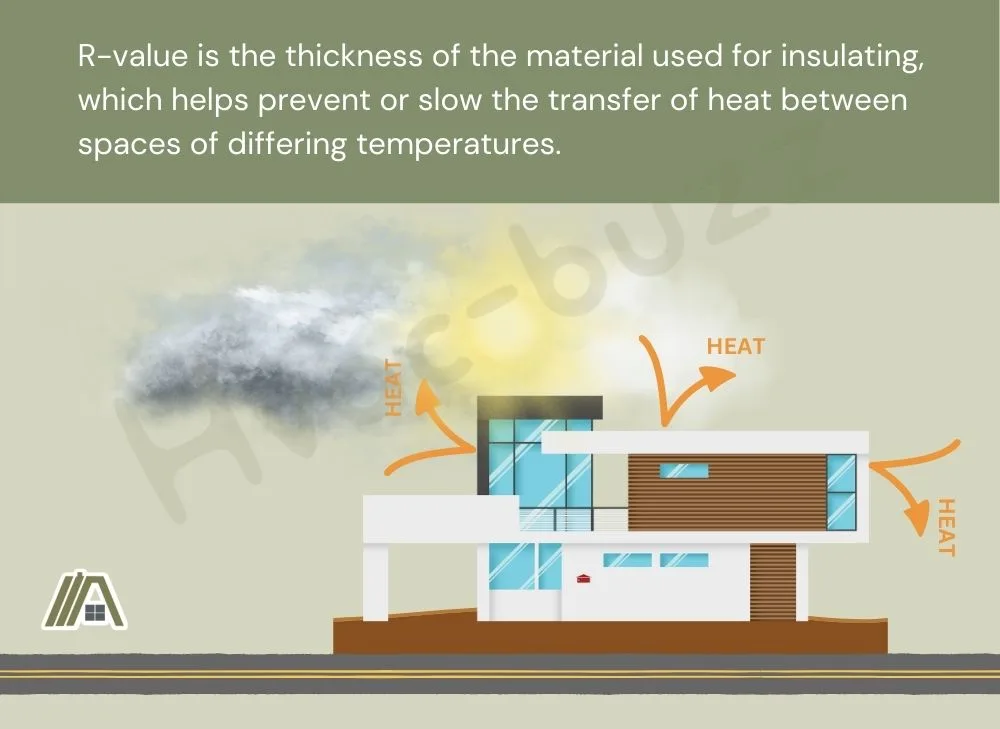
So, R-values are the thermal resistance per unit area and measure how well a barrier resists the conductive flow of heat.
The conductive flow of heat, or conduction, is the transfer of heat through contact and occurs on a temperature gradient (heat moves from the hotter body to the cooler body).
Conduction can be influenced by the properties and nature of the material between the bodies. This is where insulating materials come in as they are resistant to thermal conductivity.
These R-values are also applied to doors, windows, walls, floors, and more, but we are focusing on the actual insulation materials here.
What Is a Good R-Value for Insulation?
A higher R-value indicates better insulation or thermal resistance from that material. A good R-value or insulation varies according to where and what you are insulating.
If you are looking for sufficient R-values, I will detail the minimum requirements from the building code. You can double those values for more optimal thermal resistance.
However, you should consult a professional if you are looking for better insulation than the minimum. This will prevent over-insulating, which costs more than it is worth.
In addition, over-insulating prevents necessary moisture removal from your home. Once you have moisture issues in your home, you will also end up with mold and structural problems, which are dangerous.
What Affects Insulation R-Values
Insulation Material
| Insulation | Typical R-value range per inch |
| Fiberglass | Blown-in: 2.2-2.7 Batting and Rolls: 4.3 |
| Cellulose | 3.2-3.8 |
| Plastic fibers | 3.8-4.3 |
| Polyurethane | Open-cell: 3.5-3.7 4.0-7.0 Closed-cell: 5.0-7.0 |
| Mineral wool (rock/slag wool) | 3.0-3.3 |
Thickness of the Insulation
Materials have a certain R-value. The thickness of these insulation materials is proportional to their insulating effect. So, the thicker the material (depth in inches), the higher the R-value.
This can be achieved using a higher R-value material that is itself thicker or by layering thinner insulation (with a lower R-value) into a thicker cover.
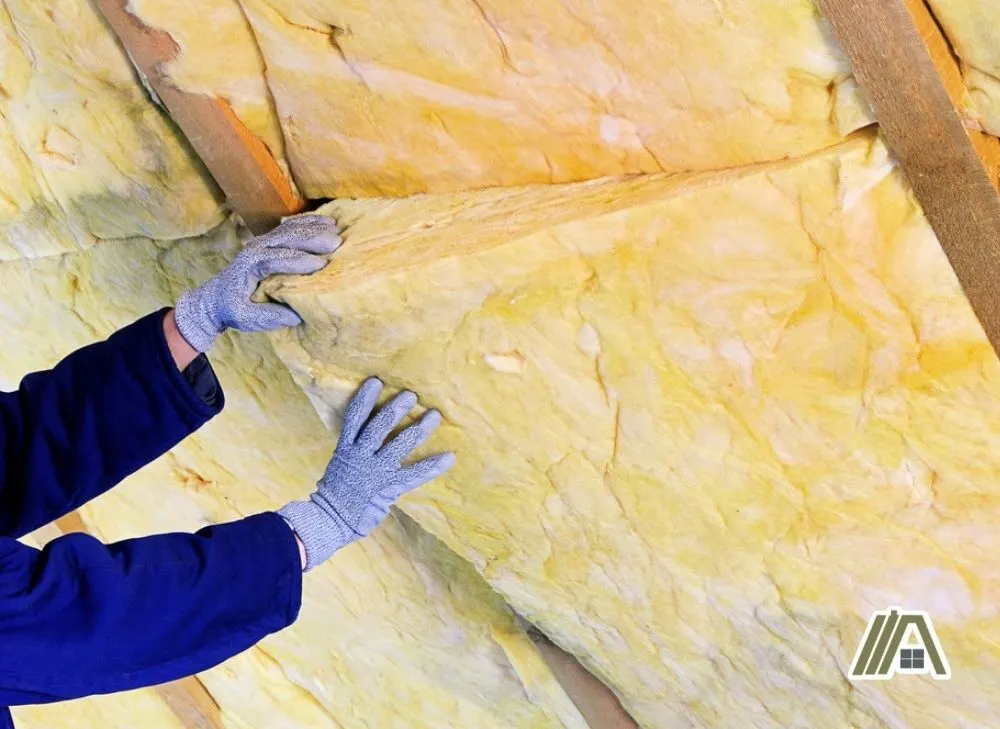
This is why people don’t view the compression of insulation as the worst thing (although it is not the recommended method). If insulation is compressed, it packs into a higher density with a higher R-value per inch, but the overall thermal resistance is lowered, so you will need more of the material.
Material Density
The density of insulation refers to how close the fibers of the material are packed.
Materials that are not densely packed have more air pockets and air is a good heat conductor.
As conduction involves heat transferring from one molecule to the next, the more of these molecules that are non-conductive (in a densely packed insulation material), the slower the transfer of heat.
Additionally, when a material is denser, less air can pass through it, which also limits convection. However, insulation is not targeted at minimizing convection.
Heat Can Still Pass Through
Insulation doesn’t stop heat from passing through, even with a very high R-value. Insulation prevents conduction, which is one way that heat moves.
Air can still pass through insulation, meaning heat can still be lost through convection. If conduction is the transfer of heat between bodies in physical contact, convection is the transfer of heat between a body and the air (or liquid) molecules around it.
So, since the insulation allows air through, it will also allow heat loss with those air molecules.
As air can still pass through, so too can moisture. Learn more in Insulation | Does It Help With Humidity?
Can R-Value Decrease?
Insulation can degrade, and with it, the R-value of the material. However, this depends on the type of insulation you use. While most insulation should last several decades, you will need to maintain and update it.
Over time, your insulation can compress and move around, lowering the original R-value installed. This is why you hear about replacing “old” insulation. This can also look like readjusting or adding to your insulation.
The different insulation materials are associated with different lifespans:
- Fiberglass: 80-100 years (start checking at 15).
- Cellulose: 20-30 years (start checking at 15).
- Mineral wool: 100 years.
- Spray foam: 80 years.
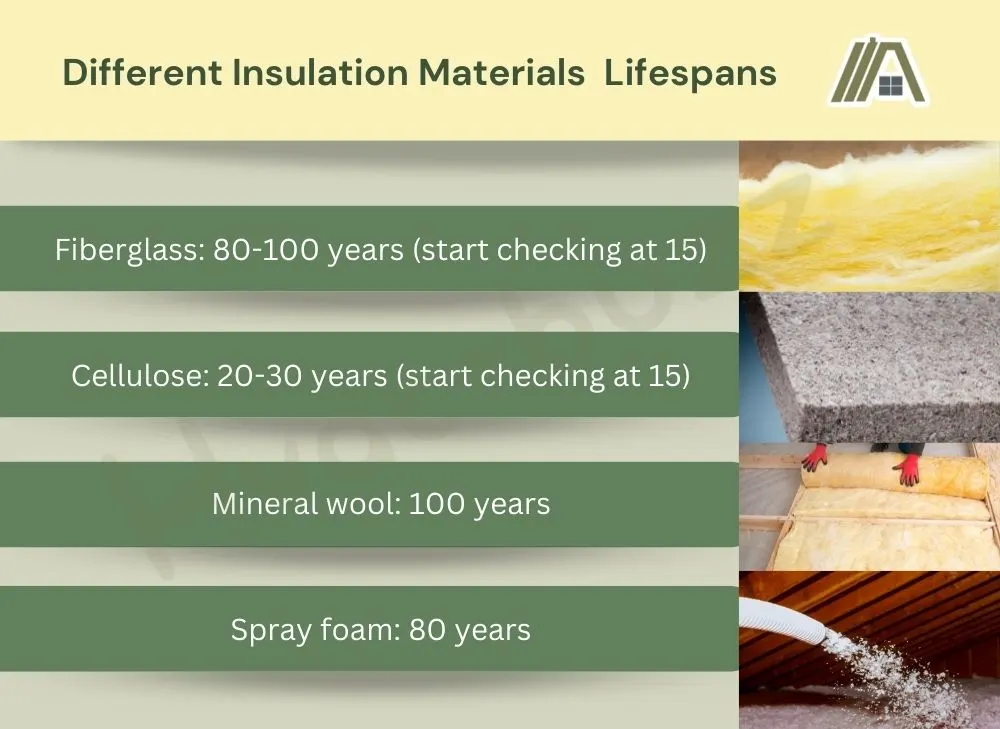
Your insulation can also be damaged if it gets wet, like when your roof or dryer duct leaks or if you experience flooding.
Not only is wet insulation less effective, but if it doesn’t dry out fast enough, the darkness and moisture result in mold growth.
Fiberglass, mineral wool, and spray foam are water resistant.
However, fiberglass insulation isn’t supposed to get soaked. If it does, water saturates the air pocket between the insulation fibers. Water can conduct energy, which means heat loss occurs through wet insulation.
Cellulose is a blown-in insulation and is supposed to be compression-resistant, but if it gets wet, the fibers absorb the moisture, making them heavier.
Over time, the insulation will compress and become denser, which means it won’t fill the space properly to provide sufficient insulation.
Spray foam insulation is designed to be mold resistant and to prevent degrading, compression, and movement. Unless your insulation gets damaged and needs to be replaced, you shouldn’t have to redo spray foam insulation within its lifetime.
High R-Value Material or More Low R-Value Material?
So, if the thickness of the insulation material relates to R-value, is it better to choose a material that is naturally thicker or to use more of a material with a lower R-value?
Well, that depends on what you want, and there are also a few other factors that could influence your choice.
The cost, durability, and longevity (as mentioned previously) of insulation differ with the type and material you use. The average cost of different forms of insulation (per ft2) is as follows:
- Blanket (batting/rolls): $0.65-$2.00.
- Loose fill/blown-in: $1.65-$3.80.
- Spray foam: $3.15-$7.50.
The average cost of different insulating materials (per ft2) is:
- Fiberglass: $0.40-$1.50.
- Cellulose: $0.60-$2.30.
- Polyurethane: $0.60-$4.50.
- Mineral (rock) wool: $1.40-$4.00.
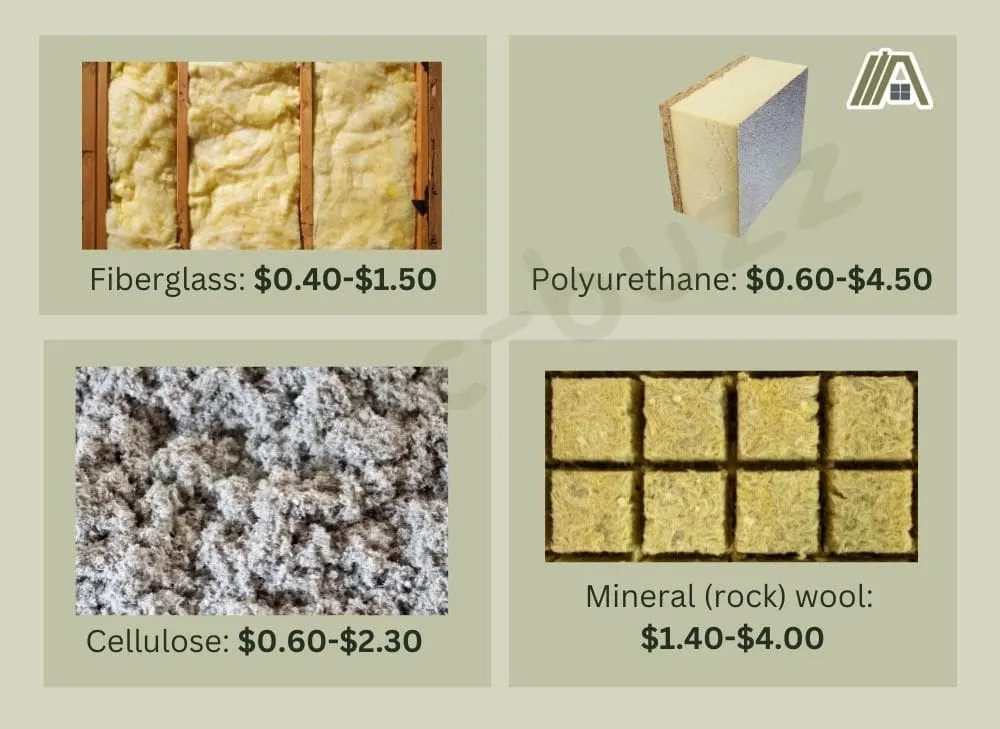
The price point you go for depends on your budget and goals. It’s also worth noting that it will likely cost extra to professionally retrofit or replace insulation than if you are installing it in a new construction (as it is being built).
The space you are insulating can also make a difference.
For example, those small and hard-to-reach places are usually prime candidates for spray foam. Spray foam is also denser than blown-in (which can also be used for similar areas), meaning less does more.
The higher quality insulation materials are generally more expensive and denser as they are more efficient.
Spray foam insulation acts as a moisture and vapor barrier, has sound dampening qualities, and is water- and mold-resistant.
The closed-cell (denser) version is better at all these things than the open-cell. This is highly durable insulation and, unless it gets damaged, you shouldn’t need to maintain it. It is more expensive, though.
Comparatively, blanket insulation is cost-effective and easy to install DIY. The batting/rolls are designed to fit into unfinished walls, ceilings, and floors amongst the beams, joists, studs, and frames.
What R-Value Is Required for Homes?
The R-values required for providing sufficient insulation to your home are determined by the climate zone you live in (find yours in the IRC, Section N1101.7). These zones are labeled according to whether they are moist (A), dry (B), or marine (C) regions.
It also depends on which part of your house you are insulating and whether it is finished. For example, there are different insulation requirements for an unfinished basement compared to a finished one.
Below are the minimum insulation requirements (R-values) for different areas of your home. There are no maximum parameters, but there is such a thing as too much insulation.
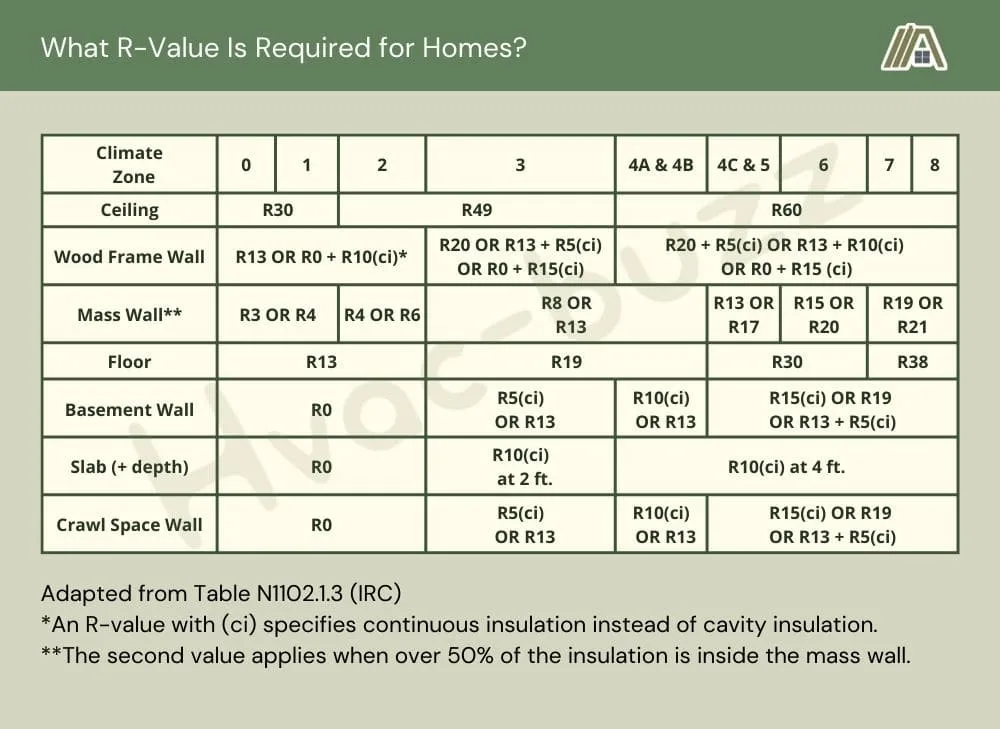
Sources
https://phys.org/news/2014-12-what-is-heat-conduction.html
https://eponline.com/Articles/2017/11/21/Right-Insulation-Material.aspx
https://www.energy.gov/energysaver/types-insulation
https://homeguides.sfgate.com/rating-insulation-six-inch-wall-85655.html
https://www.isotherm.co.za/whats-fuss-r-value/
https://www.ecostarinsulation.ca/blog/higher-lower-r-value-better-energy-efficiency
https://www.forbes.com/home-improvement/insulation/home-insulation-cost/
https://homeguide.com/costs/spray-foam-insulation-cost
https://courses.lumenlearning.com/suny-ap2/chapter/energy-and-heat-balance/
https://discover.agl.com.au/your-home/when-and-how-to-update-insulation/
https://insulation4less.co.uk/blogs/guides-and-news/how-does-water-affect-insulation-materials
https://www.angi.com/articles/when-should-i-replace-my-insulation.htm
https://www.daviddarling.info/encyclopedia/P/AE_plastic_fiber_insulation.html
https://energyeducation.ca/encyclopedia/Fibrous_insulation
https://virginiafoam.com/is-it-possible-to-have-too-much-insulation-in-your-home/

